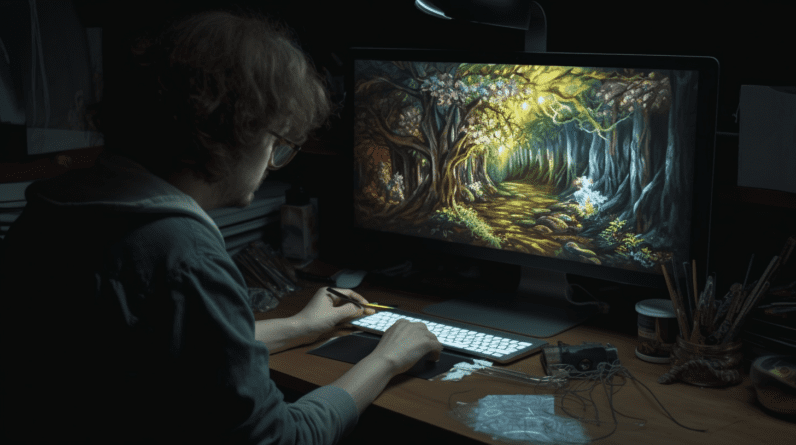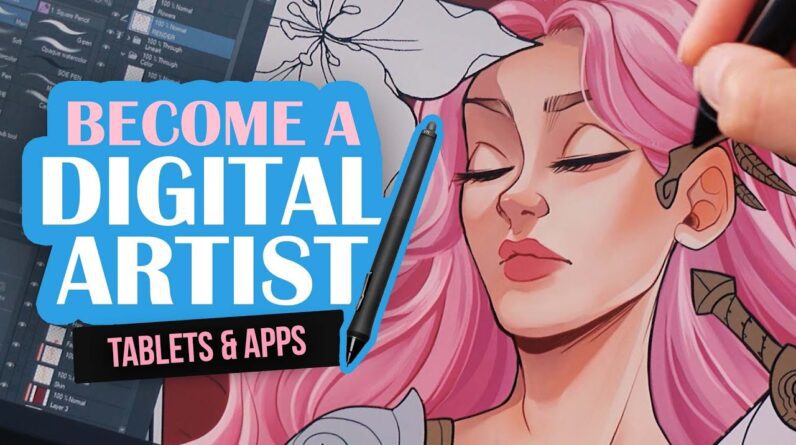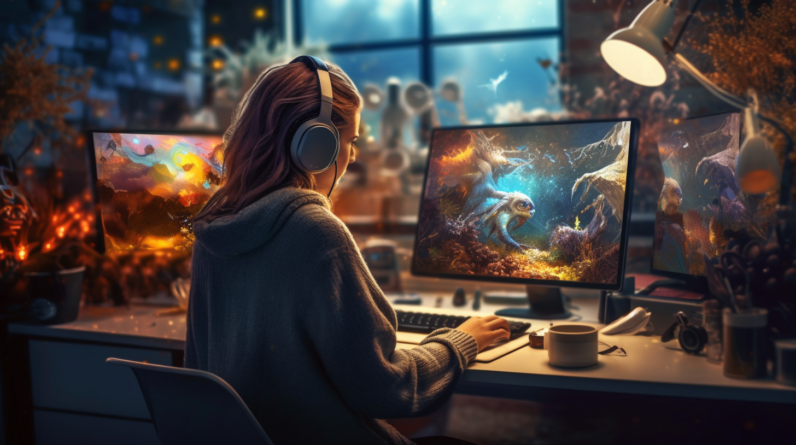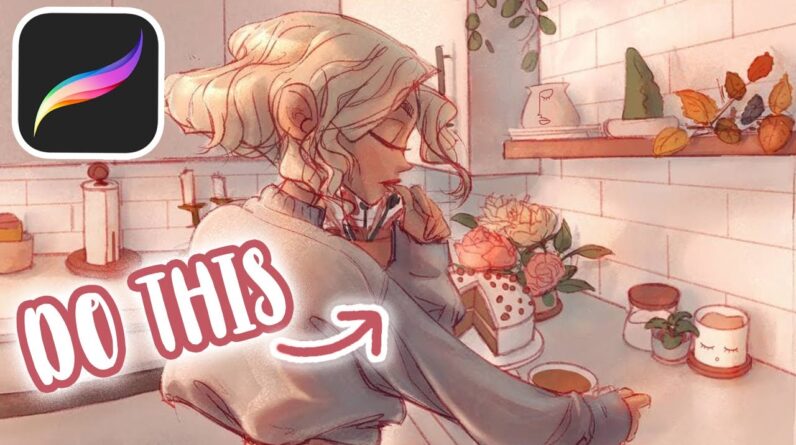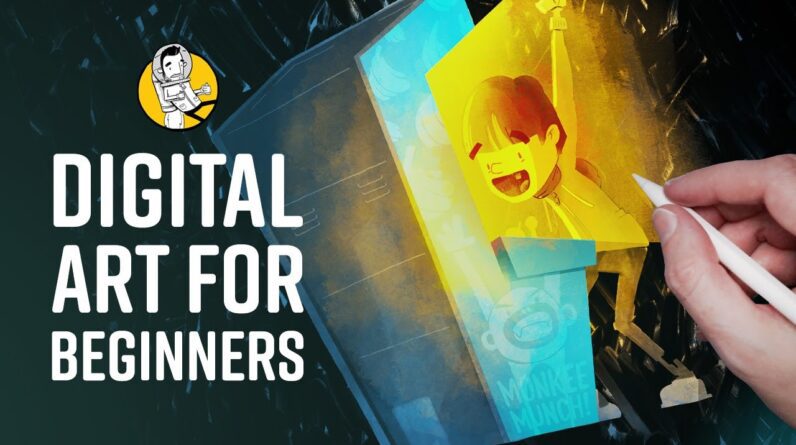
Introduction to Digital Art
Digital art is a form of artistic expression that utilizes digital technology to create visual or interactive artworks. It has emerged as a vibrant and rapidly evolving field, bridging the gap between traditional art techniques and modern technology. In this article, we will explore the fascinating world of digital art, its benefits, various types, tools and software used, techniques and styles, its applications in different industries, online communities and platforms, challenges, future trends, and more.
1. Benefits of Digital Art
Digital art offers numerous advantages over traditional art forms. Firstly, it provides artists with unparalleled versatility and flexibility. With digital tools, artists can experiment with various techniques, colors, and styles, and easily make adjustments or undo mistakes. Additionally, digital art allows for easy modification and manipulation, enabling artists to explore new creative possibilities.
Secondly, digital art is highly accessible and more affordable compared to traditional art supplies. It eliminates the need for expensive materials and offers endless digital resources that can be reused and shared. This accessibility has democratized art creation and made it more inclusive, allowing aspiring artists from diverse backgrounds to express themselves.
Furthermore, digital art promotes interactivity and collaboration. Artists can create interactive artworks that engage viewers and encourage their participation. Additionally, digital platforms facilitate collaboration among artists from different locations, fostering a vibrant and global artistic community.
2. Types of Digital Art
Digital art encompasses various forms and mediums. Some popular types include:
- Digital painting and drawing: Artists use digital tools to simulate traditional painting and drawing techniques. They can create detailed and vibrant artworks with a wide range of brushes and effects.
- 3D modeling and animation: Artists create three-dimensional objects or characters using specialized software. They can manipulate the virtual objects and bring them to life through animation.
- Digital photography and photo manipulation: Photographers use digital cameras and editing software to capture and enhance images. They can also manipulate photographs to create surreal or abstract compositions.
- Digital sculpture and installation art: Artists use 3D modeling software to create virtual sculptures or installations that can be experienced in virtual reality or projected in physical spaces.
3. Tools and Software for Digital Art
To create digital art, artists rely on various tools and software. Some essential ones include:
- Graphic tablets and stylus pens: These devices allow artists to draw directly onto a pressure-sensitive surface, providing a more natural and intuitive drawing experience.
- Digital painting software: Programs like Adobe Photoshop, Corel Painter, and Procreate offer a wide range of brushes, effects, and layering capabilities, enabling artists to create stunning digital paintings.
- 3D modeling and animation software: Applications such as Blender, Autodesk Maya, and ZBrush empower artists to build three-dimensional models, sculpt virtual objects, and bring them to life through animation.
- Photo editing software: Tools like Adobe Lightroom and Adobe Photoshop provide photographers with extensive editing capabilities, allowing them to enhance images, apply filters, and make precise adjustments.
4. Techniques and Styles in Digital Art
Digital art encompasses a vast array of techniques and styles. Some notable ones include:
- Realistic digital painting: Artists strive to create digital paintings that closely resemble traditional oil or acrylic paintings. They focus on achieving lifelike textures, lighting, and proportions, often using high-resolution brushes and meticulous attention to detail.
- Abstract and surreal digital art: Artists explore non-representational forms, shapes, and colors to evoke emotions or convey abstract concepts. They often experiment with various digital effects and techniques to create unique and thought-provoking compositions.
- Concept art and character design: Digital art plays a crucial role in the creation of concept art for films, video games, and animation. Artists develop detailed character designs, environments, and props, helping bring fictional worlds to life.
- Photorealistic 3D rendering: Using advanced 3D software and rendering engines, artists can produce highly realistic digital renderings that mimic real-world materials, lighting, and textures. This technique finds applications in architectural visualization, product design, and visual effects.
5. Digital Art in Different Industries
Digital art has made a significant impact across various industries, including:
- Entertainment and media: Film, television, and animation heavily rely on digital art for visual effects, character design, and world-building. Digital art brings imagination to reality, captivating audiences with stunning visuals.
- Advertising and marketing: Digital art plays a vital role in creating eye-catching advertisements, branding materials, and promotional campaigns. It enables companies to communicate their message effectively and engage their target audience.
- Video games and virtual reality: Digital art forms the backbone of the gaming industry. Artists create immersive environments, detailed character models, and breathtaking visual effects, enhancing the gaming experience. Virtual reality (VR) also leverages digital art to create realistic and immersive virtual worlds.
- Architecture and interior design: Digital art has revolutionized architectural visualization. Artists can create detailed 3D models, render realistic virtual spaces, and even offer interactive virtual tours, allowing clients to visualize architectural projects accurately.
6. Digital Art Communities and Platforms
The digital art community thrives on various online platforms and communities, fostering collaboration, inspiration, and exposure. Some popular platforms include:
- Online galleries and portfolios: Websites like Behance, DeviantArt, and ArtStation provide artists with a platform to showcase their digital artwork, gain feedback from peers, and connect with potential clients and collaborators.
- Social media and art sharing platforms: Social media platforms such as Instagram and Pinterest allow artists to share their artwork, reach a wider audience, and engage with fellow artists and art enthusiasts.
- Digital art communities and forums: Online communities like Reddit’s r/DigitalArt and ConceptArt.org provide spaces for artists to share their work, discuss techniques, ask for feedback, and learn from others.
7. Challenges and Criticisms of Digital Art
While digital art offers numerous advantages, it also faces certain challenges and criticisms. Some of these include:
- Authenticity and reproducibility: Unlike traditional art forms, digital artworks can be easily replicated and reproduced without degradation. This raises questions about the uniqueness and value of digital art pieces.
- Skill and craftsmanship: While digital tools provide artists with more flexibility and ease of use, there is a perception that digital art requires less skill or craftsmanship compared to traditional techniques. This criticism overlooks the mastery of digital tools and the artistic vision required to create compelling digital artworks.
- Copyright and plagiarism concerns: The digital realm poses challenges in terms of protecting artists’ intellectual property. Digital artworks can be easily copied, shared, or even manipulated without proper attribution or permission, leading to copyright infringement and plagiarism issues.
8. Future Trends in Digital Art
The future of digital art is ripe with exciting possibilities. Some emerging trends include:
- Artificial intelligence and generative art: The integration of artificial intelligence (AI) with digital art opens up new avenues for creativity. AI algorithms can generate art autonomously or assist artists in the creation process, resulting in unique and unexpected artworks.
- Virtual and augmented reality integration: As virtual and augmented reality technologies continue to evolve, digital art will play a pivotal role in creating immersive and interactive experiences. Artists can create virtual art galleries, sculptures, and installations that users can explore in virtual or augmented reality environments.
- Interactive installations and immersive experiences: Digital art installations that combine physical and virtual elements are gaining popularity. Artists create interactive experiences where viewers can engage with the artwork, triggering dynamic visual and auditory responses.
10. Conclusion
Digital art has revolutionized the way we create, experience, and appreciate art. Its versatility, accessibility, and interactive nature have opened up new possibilities for artists and art enthusiasts worldwide. With a wide range of tools, techniques, and styles, digital art continues to evolve, pushing the boundaries of creativity. As technology advances, we can expect even more exciting developments in the field of digital art.
FAQs
- Can anyone learn digital art, or is it only for professionals?
- Absolutely! Digital art is accessible to anyone interested in exploring their creative side. With the right tools, software, and online resources, anyone can learn and develop their skills in digital art.
- Do I need expensive equipment to create digital art?
- While high-end equipment can enhance your digital art experience, it is not a requirement. There are affordable options available, such as graphic tablets and free or low-cost software, that can help you get started in digital art.
- Can digital art completely replace traditional art forms?
- Digital art is not meant to replace traditional art forms but rather coexist alongside them. Both have their unique qualities and can be appreciated for different reasons. Digital art offers new avenues of exploration and possibilities, while traditional art forms retain their timeless charm and tactile appeal.
- Is digital art considered a legitimate form of artistic expression?
- Absolutely! Digital art has gained widespread recognition and acceptance within the art community. It has been featured in galleries, museums, and prestigious art competitions, demonstrating its legitimacy as a valid and impactful form of artistic expression.
- What are some tips for beginners in digital art?
- Start by familiarizing yourself with basic digital art tools and software. Experiment with different techniques and styles to find your artistic voice. Don’t be afraid to seek feedback and learn from other artists. Practice regularly and enjoy the journey of exploring your creativity through digital art.

